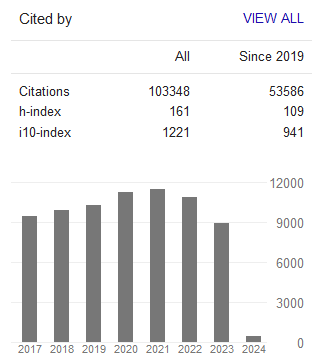Modelling And Estimation Of Volatility In The Indian Stock Markets
- hojatallah goudarzi
Abstract
Abstract: The international financial markets turmoil, which started around mid-2007, has depreciated substantially since August 2008. The financial market crisis has led to the collapse of major financial institutions. Nevertheless, crashes and/or crises are not devoted to only developed markets and developing countries including India, are not excluded from this rule and it may face such a condition. The sharp decline of Sensex price index from its closing peak of 20,873 on January 8, 2008, to less than 10,000 by October 17, 2008, in line with similar large declines in other major stock markets is good reminders of this fact. Volatility as a measure of risk plays an important role in many financial decisions in such a situations. The main purpose of this study is to examine the volatility of the Indian stock markets and its related stylized facts using ARCH models. The BSE500 stock index was used to study the volatility in the Indian stock market over a 10 years period. Two commonly used symmetric volatility models, ARCH and GARCH were estimated and the fitted model of the data, selected using the model selection criterion such as SBIC and AIC. The adequacy of selected model tested using ARCH-LM test and LB statistics. The study concludes that GARCH (1,1) model explains volatility of the Indian stock markets and its stylized facts including volatility clustering ,fat tails and mean reverting satisfactorily.
- Full Text:
 PDF
PDF
- DOI:10.5539/ijbm.v5n2p85
Journal Metrics
Google-based Impact Factor (2023): 0.86
h-index(2023): 152
i10-index(2023): 1168

Index
- Academic Journals Database
- AIDEA list (Italian Academy of Business Administration)
- ANVUR (Italian National Agency for the Evaluation of Universities and Research Institutes)
- Berkeley Library
- CNKI Scholar
- COPAC
- EBSCOhost
- Electronic Journals Library
- Elektronische Zeitschriftenbibliothek (EZB)
- EuroPub Database
- Excellence in Research for Australia (ERA)
- Genamics JournalSeek
- GETIT@YALE (Yale University Library)
- IBZ Online
- JournalTOCs
- Library and Archives Canada
- LOCKSS
- MIAR
- National Library of Australia
- Norwegian Centre for Research Data (NSD)
- PKP Open Archives Harvester
- Publons
- Qualis/CAPES
- RePEc
- ROAD
- Scilit
- SHERPA/RoMEO
- Standard Periodical Directory
- Universe Digital Library
- UoS Library
- WorldCat
- ZBW-German National Library of Economics
Contact
- Stephen LeeEditorial Assistant
- ijbm@ccsenet.org
